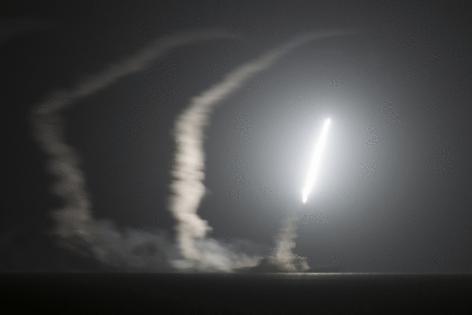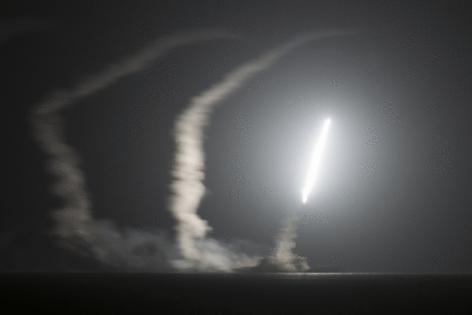US Navy to field 'game-changer' anti-ship Tomahawk by September
Published in News & Features
WASHINGTON — The U.S. Navy will start fielding an anti-ship version of its Tomahawk cruise missile on destroyers by late September in what the service’s readiness boss sees as a “game-changer” against a numerically superior Chinese fleet.
Fleet Forces Command Admiral Daryl Caudle said an anti-ship version of the U.S.’s best known non-nuclear missile, which is currently used for land attack, will greatly increase the service’s lethality.
“The more fungible you make a weapon the more utility it has for different circumstances,” he said.
The Tomahawk made its battlefield debut in the early hours of the 1991 Persian Gulf War in Iraq and was deployed earlier this year to attack Houthi targets in Yemen.
Fielding a new seaborne version of it would add to a growing U.S. arsenal of ship-attack weapons such as the new Long-Range Anti-Ship Missile, complementing submarine-launched torpedoes in the event of conflict in Asia.
Building it for submarine and destroyer launch will “make it a very high-utility weapon,” Caudle said in an interview at Bloomberg’s headquarters in New York.
The Navy plans to start fielding the new missiles on destroyers by Sept. 30 and make them available for submarine deployments between April and June next year once they complete testing, said Chip Whipkey, Tomahawk deputy program manager. The service is looking to purchase as many as 1,302 Maritime Strike Tomahawks from RTX Corp.
The schedule for outfitting the new maritime strike missile on destroyers fits roughly within the Pentagon’s plan to field thousands of drones in the Indo-Pacific region to counter China. That’s known as the Replicator program, which the military aims to deploy on a large scale in August.
In addition to ship-killing Tomahawk, the Navy’s growing arsenal uses artificial intelligence algorithms on its submarine sonar systems today “to help distinguish man-made noise sources from biological sources” such as fish, Caudle said.
“This capability has been operating on Los Angeles and Virginia-Class submarines for several years,” said spokesman Commander Jason Fischer.
China’s projected massive naval increase has fixated lawmakers intent on pouring billions into U.S. warship construction to boost the Navy’s roughly 300 inventory.
The Pentagon estimates that China’s fleet of more than 370 ships, including submarines and aircraft carriers, will grow to 435 by 2030.
Still, Caudle urged caution in launching into a “shipbuilding arms race,” saying the focus should be on U.S. capabilities per vessel.
“It’s tempting to get in a shipbuilding arms race where we really are trying to go tit-for-tat, where we’re judging the value of combat power of a naval force by the numbers,” said Caudle.
“I don’t think that’s a good strategy,” he said. “A better strategy is to build high-end, highly capable, large payload volume ships like we have,” citing Arleigh Burke-class guided-missile destroyers, as well as the U.S. fleet submarines aircraft carriers.
Caudle also said a projected increase in China’s fleet comes with challenges, including increased munitions purchases and crew.
“You have to crew all those ships. You have to sustain all those ships. You’ve got to have a place for them to moor” and have housing for the crew, he said. “So it’s not just buying ships.”
©2025 Bloomberg L.P. Visit bloomberg.com. Distributed by Tribune Content Agency, LLC.










Comments